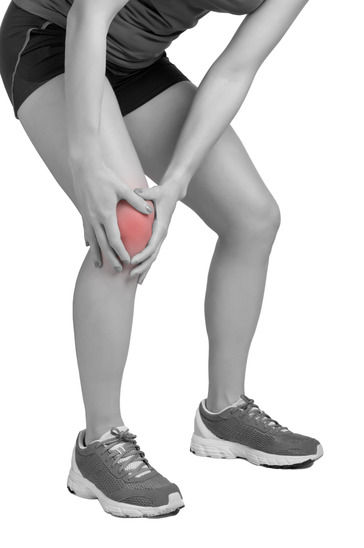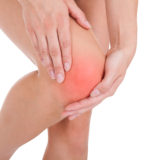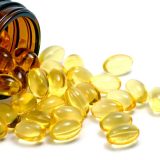

The most common cause of disability in the United States, arthritis limits the activities of millions of American adults. Describing an inflammation of one or more joints, there are over 100 different types of arthritis responsible for arthritic pain and suffering. Although medications designed to reduce arthritic pain account for a major percentage of pharmaceutical sales, they are not always the top choice of sufferers. The side effects associated with pain-controlling drugs range from mild to severe, and are the main reason that people seek alternative forms of pain relief.
About Arthritis
Arthritis is a complex collection of musculoskeletal disorders with many causes. Unfortunately, arthritis is not yet fully understood and there are no cures. Consisting of many types of conditions that destroy joints, and the surrounding bones, muscles, cartilage and other connective tissues, arthritis is a major source of pain and immobility.
According to the Arthritis Foundation, the following facts describe the enormity of arthritis’ impact:
- Arthritis affects 50 million Americans – or 1 in every 5 adults.
- Arthritis is a more frequent cause of activity limitation than heart disease, cancer or diabetes.
- Arthritis prevalence increases with age. Approximately 50 percent of adults 65 years or older report an arthritis diagnosis.
- The most common form of arthritis – osteoarthritis is a progressive, degenerative joint disease characterized by the breakdown of joint cartilage.
- Characterized by joint stiffness and pain, osteoarthritis (OA) affects nearly 27 million Americans, most over the age of 45.
Cartilage normally protects a joint, functioning as a shock absorber. When cartilage breaks down, the joint’s bones rub together, causing pain, swelling, inflammation, stiffness and reduced range of motion.
Treating Arthritic Joints
There is no cure for most types of arthritis. Instead, treatment goals are to reduce pain, improve function and prevent further joint damage. Therapies involving movement are preferred to treat osteoarthritis and other types of joint inflammation. Making up the backbone of arthritis therapy, an exercise and stretching program can help:
- relieve stiffness
- reduce pain
- improve muscle and bone strength
Over-the-counter and prescription medications frequently accompany or replace stretching and exercise to help arthritic joints. Examples of drugs used for arthritic pain include:
- Acetaminophen – Tylenol
- Non-steroidal anti-inflammatories (NSAIDS) – aspirin, ibuprofen or naproxen
- Biologics – Enbrel, Remicade, Humira, Orencia, Rituxan, Simponi, Cimzia and Acetmra
- Corticosteroids – steroids injected or taken orally
- Disease-modifying anti-rheumatic drugs (DMARDS) – methotrexate, gold salts, penicillamine, sulfasalazine and hydroxychloroquine
- Immunosuppressants – azathioprine, cyclophosphamide
- Narcotics – Vicodin, methadone, fentanyl, oxymorphone, OxyContin, morphine, tramadol
Every medication listed above has risks, some more severe than others. The potential side effects of the drugs listed above may include stomach irritation, liver damage, gastrointestinal bleeding, tolerance, infection, weakened bones, weight gain, insomnia, mood changes, elevated blood pressure, high blood glucose levels, lymphoma, skin rashes, kidney damage, visual impairment, nausea, vomiting, constipation and addiction. As such, an increasing number of educated people are refusing medication and seeking safe, natural ways to ease their arthritic pain.
Alternatives
For arthritic pain relief that doesn’t require trading one ailment for another, the following helpful strategies are intended to complement a stretching and exercise program:
- Heat – Highly regarded for pain relief, applying a heat pack or taking a warm bath can help relieve some types of joint pain. Because heat causes expansion, applying it to an arthritic joint expands muscles, ligaments, tendons and connective tissue to relieve pain and stiffness.
- Inhibition of COX-2 Enzymes – While the COX-2 enzyme enables pain, inflammation and swelling, inhibiting COX-2 enzymes minimizes many types of pain, including joint pain. Several pharmaceutical versions of COX-2 inhibitors were discontinued due to their side effects. However, natural sources (such as ginger root, green tea extract, turmeric root and Chinese skullcap) appear to offer the COX-2 inhibiting benefits without any of the risks.
- Glucosamine and Chondriotin – Many types of joint pain are due to the breakdown of cartilage, thus reducing the body’s natural cushioning between the bones in a joint. Glucosamine and chondroitin are both ingredients in healthy joint cartilage. Thus, providing the body with these raw materials needed for joint cushioning may help support healthy cartilage.
- Acupuncture – A 2,000 year old practice involving the insertion of thin, solid needles into the skin, acupuncture is well-known to relieve OA pain. A large retrospective study published in the September 2012 Archives of Internal Medicine found acupuncture to be very effective in relieving chronic pain. The University Of Maryland School Of Medicine published a study back in December 2004 in the Annals of Internal Medicine that found traditional Chinese acupuncture significantly reduced pain and improved function for patients with knee osteoarthritis.
- Topical Cream – Absorbed through the skin, topical pain creams or gels are rubbed on to the skin over painful joints. The active ingredient could include capsaicin (like Capzasin-P), salicylates (like AsperCreme or BenGay) or menthol (like IcyHot or Biofreeze). Several studies have demonstrated topical pain relief creams capable of providing temporary arthritis relief.
- Boswellia Serrata – Boswellia inhibits the production of leukotrienes, substances that promote inflammation in the joints. A 2011 Indian study published in the International Journal of Medical Sciences found that a Boswellia serrata preparation provided significant improvements in pain and function in just five days in individuals with osteoarthritis of the knee.
With 20 percent of Americans seeking ways to ease their arthritis pain, increase joint function and maximize joint longevity, medications are sometimes necessary. However, the side effects that accompany many of these pharmaceuticals are a major deterrent to a growing number of health-conscious people. While they should always be second to a daily exercise and stretching routine, there are plenty of safe, natural alternatives for arthritis sufferers. Combining Boswellia, topical creams, acupuncture, natural COX-2 inhibitors, heat therapy, glucosamine and chondroitin into mainstream arthritis care will reduce people’s reliance on drugs, help ease joint pain and increase their mobility; all of which improve the outlook for safely treating arthritic joints.
*Editor’s Note – The information contained is not intended to replace or supersede medical advice. Always consult with a physician before taking any supplements or making changes to your healthcare regimen.





The best information you have given in this article.